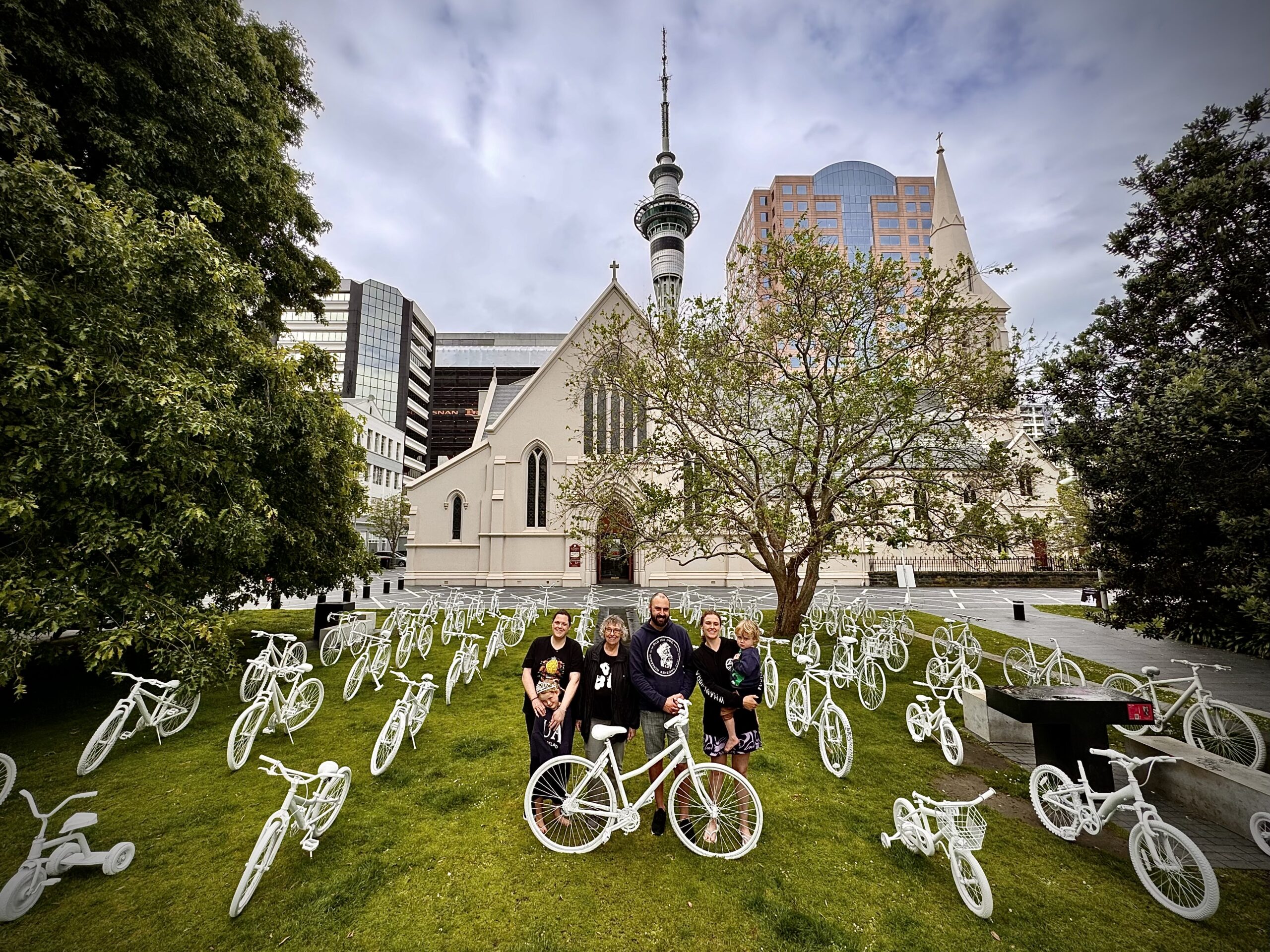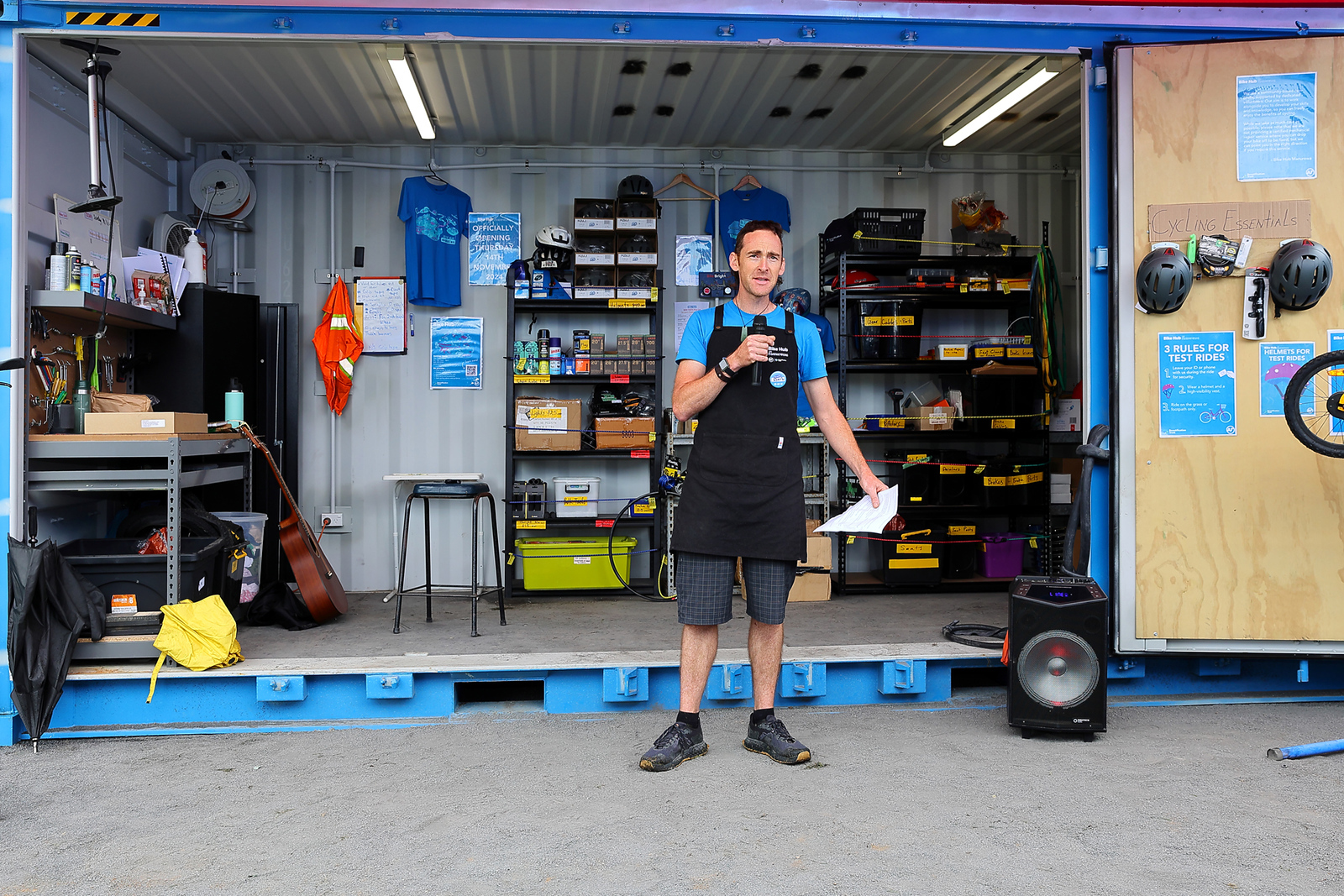Transport Minister Simeon Brown has announced that safer speeds, including those around schools, will be reversed.
Instead, the bubble of safety is shrinking dramatically in both size and duration. New rules will see a tiny 150 metre radius around the school gate protected with 30 km/hr speeds between 8.00-9.30am and 2.30-4.00pm. This is despite Auckland Transport figures showing that 85% of deaths and serious injuries around schools occur outside of the times when the variable limits are in place. The picture is even more frightening for rural kids, where allowed speeds will be 60 km/hr.
Bike Auckland Chair Karen Hormann explains:
“We see a mismatch between the Government’s stated aim of keeping young New Zealanders safe and the rock solid evidence that this will do the opposite. Communities don’t want safer speeds reversed – they want them expanded.”
Hormann continues:
“The Government cites dubious economic benefits to their proposals. Which of us is willing to sacrifice children’s lives for these supposed benefits?”
Love what we do? Join the Movement for a Better Region on Bikes!
Creating permanent safe speed zones is significantly more efficient in reducing fatalities and injuries and more cost-effective to establish. This complex and costly-to-implement new approach flies in the face of data showing that where the 30km/hr limit was put in place, deaths have reduced by 30%. Deaths have increased by 9% across the rest of the region in the same period. Schools see the benefits first hand, with 78% of school leaders backing the permanent safer speeds zones in the recent speed management plan consultation in Tāmaki Makaurau Auckland.

Bike Auckland is also concerned to see the area for slower speeds shrink.
“150 metres won’t get a child to the end of the street. It won’t even get them to the bus stop in many cases,” says Hormann. “This absolutely removes transport choice for families, at a time when we need to give people the option of more affordable transport modes.”
Currently, over a third of Auckland’s roads have 24/7 safer speeds, making the new rule a vast reduction. These include zones around schools wider than those proposed in the new rule. Auckland Transport’s consultation on safer speed implementation found that 74% of Aucklanders were willing to accept an increase in journey time if it meant the roads around schools were safer.
Bike Auckland encourages people to have their say during the 4-week consultation period ending on Thursday 11 July.
Other quotes
Dr Jamie Hosking, public health researcher at Waipapa Taumata Rau, University of Auckland and member of the Healthy Auckland Together (HAT) transport network explains why this is going to stop families from using healthy active modes of transport like walking, scooting and biking:
“If people don’t feel safe walking and cycling, they will get in a car instead. That increases carbon emissions and air pollution, and stops people getting healthy physical activity, as well as putting even more traffic onto our streets.”
Father of four and bicycle commuter Dr Nicholas Walker says:
“Working as an obstetrician, my goal is to ensure, as far as possible, the safe arrival of a loved one. Whether this is birthing a baby, or a child arriving to school safely, I would hope the same principle applies. With this in mind, I believe safer vehicle speeds around school zones must be a priority so that the babies we birth safely today are not to experience unsafe and preventable accidents in the future.”
Update July 16 – Additional quote
William McCartney, who wrote in after time of publishing,
You persuaded me to make a submission on speed limits. I said this. Thought you might like to see it.
“I’ve held a driver’s licence for 47 years. I’m licensed to drive motor vehicle categories 1, 2, 3, 4, 5 and 6. I’ve driven the full length of every state highway in NZ – 90 of them – with the exception of the Mangamuka section of SH1. I’ve driven a 1954 Land Rover from east to west across the centre of Australia. I’ve driven in Canada, the USA, Great Britain, Germany, France, Austria, Turkey, Indonesia, Malaysia, and Thailand. I’ve learned that speed limits are a much smaller factor than most people think in getting from A to B. Traffic volume is the biggest factor. Increasing speed limits will produce a measurable increase in deaths and injuries and the economic cost of those things. But it will make little if any difference to the total time of most journeys.”
Sources
Auckland Transport Safe Speeds Monitoring Report
Auckland Transport Roading Satisfaction Survey
Auckland Transport Speed Management Plan Economic Assessment




